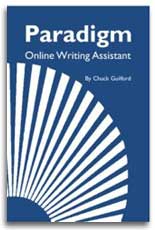The thesis/support pattern refines and systematizes natural thought patterns. Besides offering an organizational framework for your writing, the thesis/support pattern can also serve as an aid to invention. It can help you probe your subject and uncover your thoughts about it. It can also help you see the reasons, experiences, observations, and judgments that underlie those thoughts.
The following process can help you produce effective expository essays on a wide variety of subjects assigned by another or chosen by yourself.
First: Restrict the scope of your subject by focusing on the particular part of it (your topic) that you know the most about and are most interested in.
Second: Make a clear, precisely worded, one sentence statement about your topic. This thesis statement should make an assertion that is not obviously true, but which you believe you can show to be true.
Third: State at least three or four "good reasons" for believing your thesis. These reasons will serve as the topic sentences for each paragraph in the body of your essay.
Fourth: Give two or three "good reasons" for believing each of your topic sentences. These sentences, which we have been calling guide sentences, will help you see a general direction of development for each paragraph.
Fifth: Develop your guide sentences with illustrative and supportive detail. Try using one or more of these traditional means of development: 1. Give an example. 2. Offer an explanation. 3. Make a comparison. 4. Supply the details.
After you've used the process a few times, it won't feel so stiff and mechanical as it might at first. As you get more comfortable, you'll modify the process to suit your own purposes and your composing style. That's good. But take your time. Don't shortcut or re-arrange the process until you're certain you know what you're doing and why.




